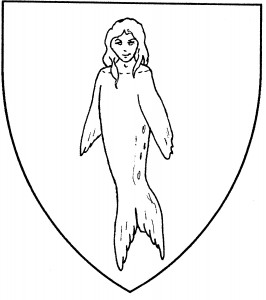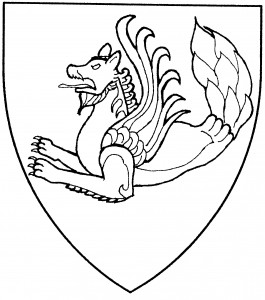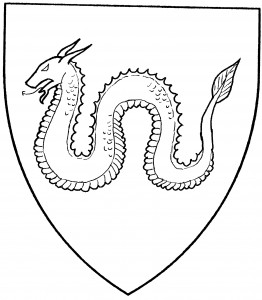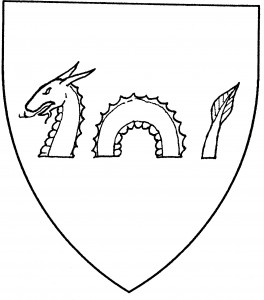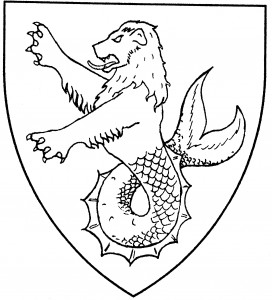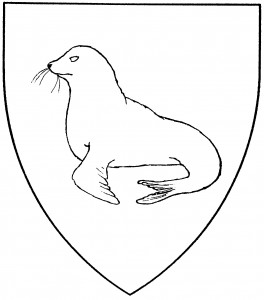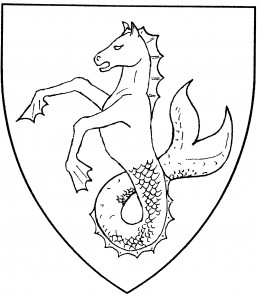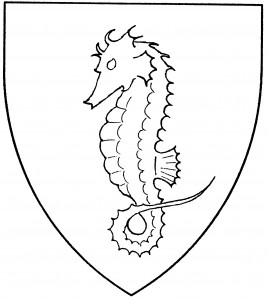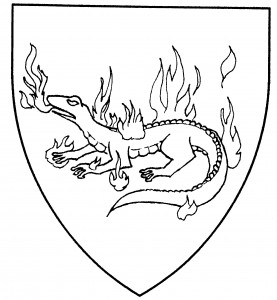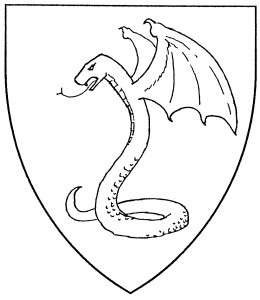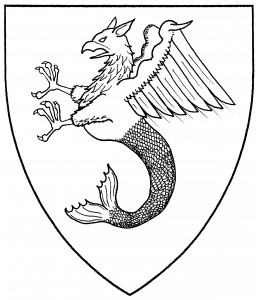
Sea-griffin (Period)
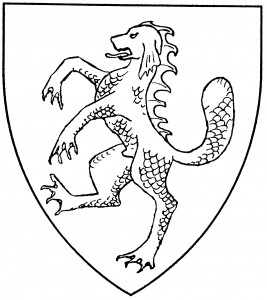
Sea-dog rampant (Period)
This class of monster is characterized by having a demi-beast conjoined to a fish’s tail. Virtually any beast may be so treated: Society armory records examples of sea-stags, sea-bears, sea-otters, and sea-urchins among others. Even monsters may be made into sea-monsters, following the same pattern (fish-tailed demi-X) as other sea-monsters: e.g., the sea-unicorn in the arms of Niemptsch, and the sea-griffin in the arms of von Mestich, both 1605 [Siebmacher 58, 69]. The illustration shows a sea-griffin. Sea-monsters are usually erect by default; if winged, the wings will be addorsed.
When the unmodified term “sea-[beast]” is used, the heraldic monster is meant; if the term may also apply to a natural creature (e.g., the sea-tortoise, the sea-urchin, &c), the modified term “natural sea-[beast]” must be used for those cases. (The sea-mew and sea-nettle are exceptions to this: they’re always depicted as the natural creatures.)
There are some monsters whose names begin with the prefix “sea-“, and yet are not fish-tailed demi-beasts. The most notable of these is the “sea-dog” or “sea-hound”, a talbot with scales and a webbed dorsal fin. Period examples show it either with webbed feet, as in the crest of Flemyng, c.1510 [Walden 156], or with a talbot’s paws and tail, as in the arms of Harry or Harris, 1547 [Dennys 155]; this is left to the artist’s discretion. The illustration shows a sea-dog with webbed feet and tail.

Sea-wolf (Period)

Sea-loat rampant (Accepted)
In like manner, English heralds defined the “sea-wolf” analogously to the sea-dog, with fins and scales [Bedingfeld 66]. However, Swedish heralds recognized the “sea-wolf” as a fish-tailed demi-wolf, in the arms of Stalder, 1399 [Raneke 420], and Society heralds follow this definition as well.
Unique to Society heraldry is the “sea-loat”, with six legs.
For specific entries, see: mermaid, sea-horse, sea-lion. See also sea-serpent, silkie.
Elisa Montagna del Susino bears: Azure ermined Or, a sea-unicorn naiant reguardant argent.
Andrew MacGregor of Glen Lyon bears: Argent, a sea-wolf counter-ermine.
Morgan of Aberystwyth bears as a badge: Gules, a baby sea-loat rampant Or.
Humfrey Matthew Lovett bears: Per fess gules and azure, three sea-dogs rampant Or.
Duncan Stuart bears: Sable, a sea-goat erect argent.
Assar merch Owen bears: Per fess Or and sable, a sea-stag counterchanged.
